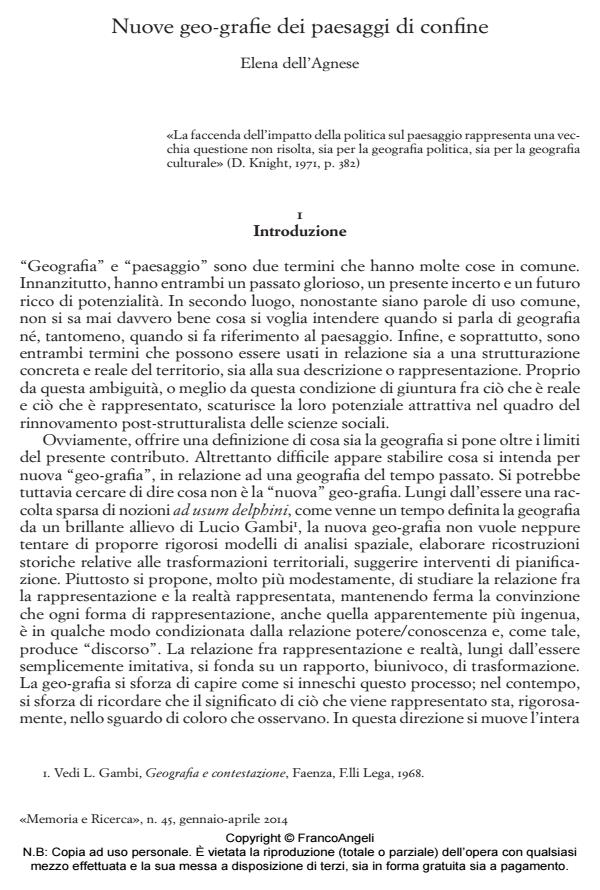Nuove geo-grafie dei paesaggi di confine
Titolo Rivista MEMORIA E RICERCA
Autori/Curatori Elena dell'Agnese
Anno di pubblicazione 2014 Fascicolo 2014/45
Lingua Italiano Numero pagine 15 P. 51-65 Dimensione file 99 KB
DOI 10.3280/MER2014-045004
Il DOI è il codice a barre della proprietà intellettuale: per saperne di più
clicca qui
Qui sotto puoi vedere in anteprima la prima pagina di questo articolo.
Se questo articolo ti interessa, lo puoi acquistare (e scaricare in formato pdf) seguendo le facili indicazioni per acquistare il download credit. Acquista Download Credits per scaricare questo Articolo in formato PDF

FrancoAngeli è membro della Publishers International Linking Association, Inc (PILA)associazione indipendente e non profit per facilitare (attraverso i servizi tecnologici implementati da CrossRef.org) l’accesso degli studiosi ai contenuti digitali nelle pubblicazioni professionali e scientifiche
At the beginning of the Twentieth century, geography used to be described as «the science of landscape». Now, such a definition seems to be out of fashion. All the same, the two words, «geography» and «landscape» still share a close connection, since they both may refer to «the thing» (to the geo-structure), and also to the «representation of the thing» (to the meta-geography). And representation is a form of power. So, while the popularity of landscape as an objective analytical tool has been fading away, the significance of landscape as a way of representing things is proving to be more and more relevant. Not only landscape is no more supposed to be «objective» reality, it does not even have to be an objective representation or to have an indisputable aesthetic quality. All the same, it is a way of seeing, and of retelling, regional, and geopolitical, stories. Thirty years after the Rumley and Minghi’s seminal book on «the geography of border landscape» (1991), the new geo-graphies of border landscapes are aimed at analysing different ways of «speaking about» and of «visualizing» border relations, from cinema to art, to literature and photography, music, cartoons.
Parole chiave:Political geography, Border, Landscape, New geography, Representation, Arts
- Beneath the Lines Laura Di Fiore, pp.161 (ISBN:978-3-030-96903-5)
Elena dell'Agnese, Nuove geo-grafie dei paesaggi di confine in "MEMORIA E RICERCA " 45/2014, pp 51-65, DOI: 10.3280/MER2014-045004